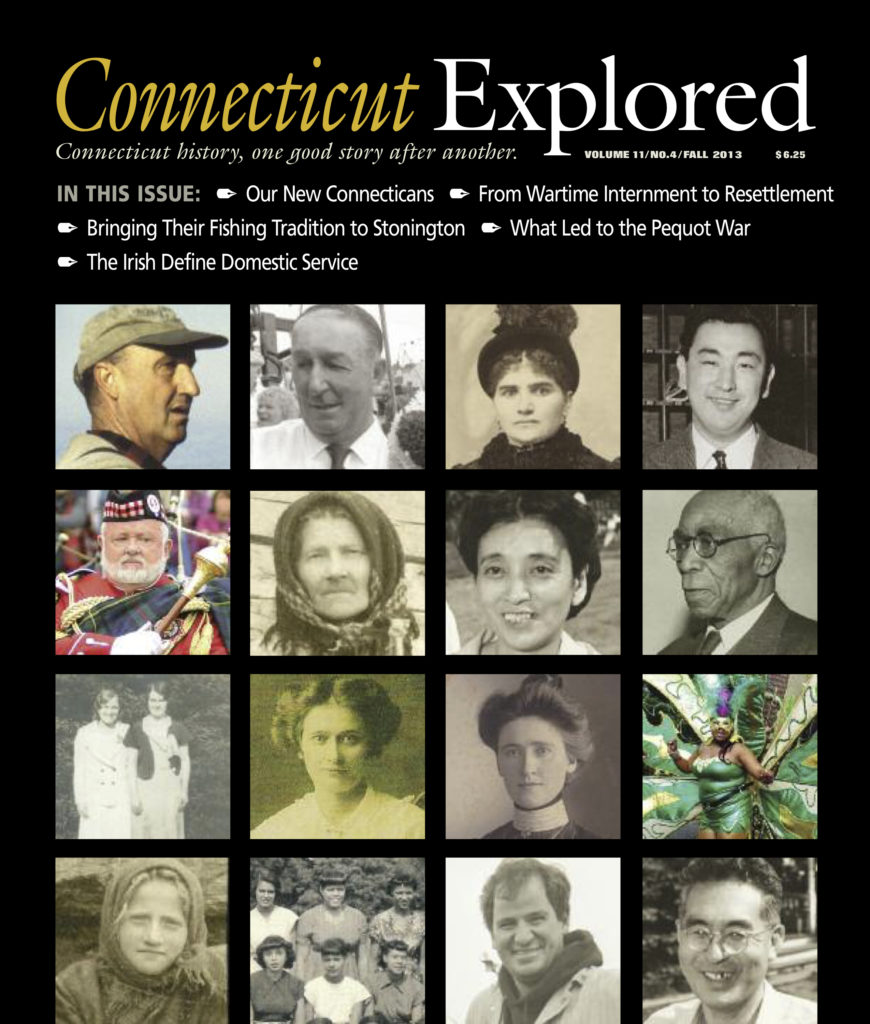 Until the 1840s, Connecticut’s population was dominated by the British. There was a smattering of other Europeans, including the Dutch, but there wasn’t much diversity. That changed dramatically in the 19th century.
Until the 1840s, Connecticut’s population was dominated by the British. There was a smattering of other Europeans, including the Dutch, but there wasn’t much diversity. That changed dramatically in the 19th century.
Of course before British settlement in the 1630s, Native Americans of various Algonquian-speaking tribes comprised all of the population of the region. After British settlement, the Pequot, Mohegan, Schaghticoke, and others continued into present day with significant communities at Mashantucket and Uncasville. Their numbers, though, were greatly reduced in the colonial period by disease and war introduced by the British.
From Connecticut’s beginning, a small population of African Americans were here, too, forced here by British adoption of slavery. But even in the 1600s, some Africans were free and owned property. Phillip and Ruth Moore are one example. Until the 20th century, African Americans were never more than about 3 per cent of the state’s population. Nevertheless, African Americans were, by 1848 when slavery was finally abolished in the state, busy establishing churches, schools, and communities across the state. They advocated for their civil rights, though without much success. Life was difficult and called for leaders like the Beman family and Rev. James Pennington.
Waves of European Immigration in the 19th Century
Waves of European immigration in the 19th century was driven by famine and violence in Europe. Their arrival coincided with the industrial revolution that changed Connecticut from an agrarian/maritime economy to a manufacturing economy.
The Irish Arrive
The Irish were the first to arrive in large numbers. Because they were Catholics in a Protestant state, their arrival disrupted the way things had always been done in Connecticut.
These two stories reveal other kinds of work that the Irish did when they first came to Connecticut.
Jews from Germany; Later from Eastern Europe
French Canadians
French Canadians began coming in large numbers to New England after the Civil War.
Portuguese
Portuguese fishermen arrived in Stonington in the 1850s to become a significant community there.
Chinese Excluded
A decade before the Chinese Exclusion Act disallowed Chinese immigration to the United States, a student exchange program was established between China and Connecticut.
20th Century Migration
Connecticut’s population continued to change in the 20th century from both immigration and migration (populations that move within a country). The state’s African American population swelled early in the 20th century from southern migration.
Puerto Ricans were another group who migrated to Connecticut in large numbers beginning in the mid-20th century.
María Sánchez: Godmother of Hartford’s Puerto Rican Community
Connecticut received both Japanese immigrants and U.S. citizens of Japanese descent during World War II. They were relocated from the West Coast by the U.S. Government out of misplaced fear.
Today Connecticut is diverse. First Lady Michelle Obama wrote in her autobiography Becoming,
So many of us go through life with our stories hidden … We grow up with messages that tell us that there’s only one way to be American. That is, until someone dares to start telling that story differently.
Places to Explore our Immigrant History
There are many historical societies across the state devoted to the history of an immigrant group. Search the Internet to find one. Your local historical society may have collected information about immigrant groups in your town. And don’t forget that your own family may be a rich resource. Conducting an oral history of your parents or grandparents and finding out what artifacts they may have can be an important way to preserve our state’s immigrant history.
